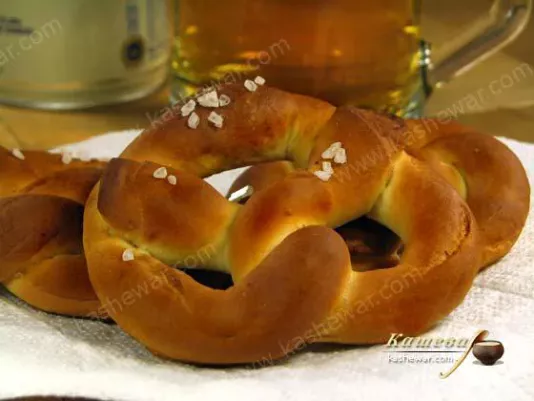Homemade Maultaschen
Homemade Maultaschen is a German recipe, a traditional Swabian recipe, often prepared for Easter.

German cuisine is a gastronomic system based on nutritious, simple, and accessible ingredients. Each region has developed its own traditions that reflect its history, climate, and social habits. The foundation of the cuisine includes meat, sausages, cabbage, potatoes, grains, legumes, eggs, and bread. Key cooking methods include braising, boiling, frying, and smoking. Germans value hearty, well-balanced meals, often serving meat with a side of cabbage, vegetables, or dumplings. Seasonality is also important: lighter dishes in summer, warming and calorie-rich ones in winter. Food traditions are tied to ancient customs, holidays, and regional festivals, where cuisine is a core expression of cultural identity. As a result, German gastronomy is not just about food – it's a way of life and a symbol of belonging.
German recipes reflect centuries of tradition, local ingredients, and a practical approach to cooking. The most famous dishes include bratwurst (grilled sausages), sauerkraut (fermented cabbage), eisbein (roasted or braised pork knuckle), schnitzel (breaded cutlet), and kartoffelsalat (potato salad). In the southern regions, dumplings and spaetzle (egg noodles) with meat and sauces are popular. Soups are also significant: from light vegetable broths to hearty legume soups with bacon. Each dish reflects the aim for satiety, balance, and nourishment. Recipes are passed down through generations and often have local variations, even within the same district. The meal structure remains consistent – a main course with a side and a sauce or salad, making German cuisine both stable and reliable.
German cuisine reflects the rhythm of daily life – moderation, order, and rationality. Food is seen not only as a physical need but as part of a structured routine. Breakfast is typically light – rolls, sausage, cheese, and butter. Lunch is the main meal of the day and includes a hot dish with meat and a side. Dinner – kaltessen – is a cold meal with sliced meats, bread, and vegetables. On Sundays, families gather for a festive meal with roast pork, duck, or beef, accompanied by sauce and dumplings. Beer often accompanies meals and is considered a part of the culinary culture. Regional festivals – Oktoberfest, Kirchweih, Weinfest – play a key role, offering traditional dishes in large quantities. These events strengthen social ties, support local producers, and help preserve culinary heritage.
German cuisine is rich in high-energy ingredients. Common staples include pork, beef, chicken, cabbage, potatoes, onions, carrots, green peas, and grains. Sausages hold a special place: bratwurst, weisswurst, and bockwurst each have their own recipes and preparation methods. Popular sauces include dark meat gravy, mustard, and horseradish. Common sides are fried potatoes, dumplings, and braised vegetables. Legumes like lentils and beans are often used as soup bases. In baking, wheat and rye flours dominate – from pretzels to seeded black bread. Desserts often include apple, plum, or cheese pies, strudels, and honey gingerbread. Cooking techniques range from boiling and baking to frying and smoking. This ensures high nutritional value and a deep, satisfying flavor without the need for complex spices or procedures.
Holidays in Germany are marked by a distinctive culinary atmosphere. At Christmas, roast duck or goose is served with red cabbage and apples, along with stollen – a yeast cake with raisins and candied fruit. Easter features lamb, stuffed eggs, and sweet bunny-shaped rolls. During Carnival, people enjoy berliner donuts and meat dishes before Lent. Autumn festivals offer grilled sausages, pork knuckle, sauerkraut, and beer. Each region has its seasonal customs: in Franconia – beer-based dishes, in Swabia – dumplings and noodles, in Bavaria – pretzels and white sausages. Festive meals are always homestyle, focusing on quantity, richness, and consistent flavor. In German culture, food is a means of preserving identity, passing on customs, and creating a sense of family comfort.
Today, German cuisine is evolving, adapting to global changes while maintaining national character. Vegetarian and vegan versions of traditional dishes are becoming common – such as plant-based sausages, mushroom dumplings, and meatless soups. Young chefs incorporate Asian, Mediterranean, and Latin American ingredients to create new fusion recipes. At the same time, there's a growing interest in local farm produce, sustainable packaging, and eco-conscious eating. German restaurants are receiving international recognition, and culinary schools attract students from all over the world. Despite modernization, the core of German cuisine remains: complete meals, high-quality ingredients, and a clear meal structure. This allows it to stay recognizable, reliable, and relevant – both at home and on the world culinary stage.